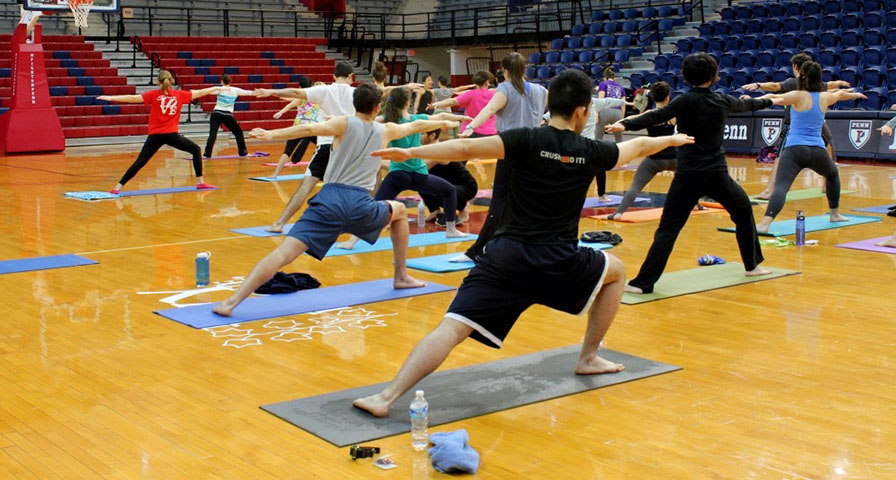Originally published Nov. 1 in The Daily Pennsylvanian
Editorial
At an academically competitive school like Penn, it isn’t hard to find a student whose most dreaded high school course was . class was often a bizarre interlude in an otherwise normal school day. Jerry Seinfeld described it well: “You had English, Social Studies, Geometry, then suddenly you’re in ‘Lord of the Flies’ for 40 minutes.”
However, beyond the clear physical benefits of exercise, college students who regularly work out are often more focused, less stressed, and have sharper memories. For these reasons, we believe that Penn should utilize its existing athletic facilities and offer for-credit physical education elective courses.
 Learning that Penn has no physical education requirement is often a relief for many incoming freshmen, though this has not always been Penn’s policy.
Learning that Penn has no physical education requirement is often a relief for many incoming freshmen, though this has not always been Penn’s policy.
In the 1900s, virtually all U.S. colleges had a physical education requirement. In the 1942 April Fool’s Day issue of the DP, a satirical notice read, “President Gates yesterday announced the end of required Physical Education and urged undergraduates to sit indoors all day.” In one decade, satire became reality. In 1952, the requirement was reduced from four years of coursework to just one, and in 1969, the requirement was abandoned altogether.
According to a study from Oregon State University, only 39 percent of U.S. colleges still have a physical education requirement. In the Ivy League, Columbia University, Cornell University, and Dartmouth College require all students to pass a swim test and take a full year of physical education. The Massachusetts Institute of Technology requires two years of .
We are not recommending that Penn should reinstate the physical education requirement because we understand that increasing the number of mandates on Penn students can add to their stress instead of reducing it. However, we recognize that in an ideal world, students should have the capacity to find time in their schedules to head to Pottruck or play a sport.
For these reasons, we believe the University should consider offering elective physical education courses. Having the opportunity to exercise while earning credit could motivate many students who might otherwise be sedentary. It would give students a structured time to invest in their health without feeling like they are neglecting their academic commitments.
Stanford University has already implemented a similar policy. While not requiring physical education for graduation, Stanford offers numerous courses graded on a pass/fail basis. Many of these courses go beyond typical intensive workout classes. They include activities like golf, table tennis, and meditation. These classes are less physically draining, while still providing a meaningful break in an otherwise inactive day.
The reality of Penn life is that it’s busy. Just telling Penn students not to stress out about jobs is never going to be effective, and closing Huntsman isn’t going to eliminate the seemingly endless stream of homework and applications students face. The smarter approach is providing incentives for Penn students to care about their health. If the University is truly committed to improving the wellness of students, they should provide a structured opportunity where students can elect to exercise without having to carve out extra time for it on top of schoolwork and recruiting.
Returning to the days of required physical education would be a mistake, but allowing students to make the choice to work out for credit could go a long way in improving the wellness of our community.
Seeking IHT Spirit System information?




